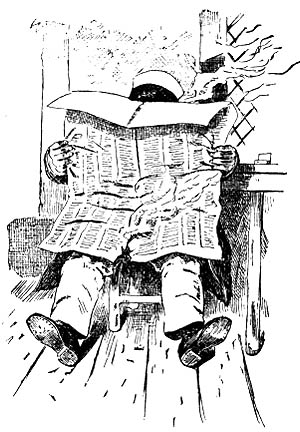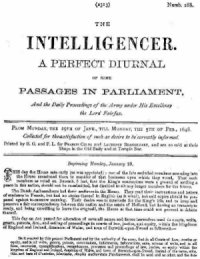Inventing the Newspaper
John Lienhard presents guest cpatters [at] uh.edu (Catherine Patterson)
Today, our guest, historian Cathy Patterson reports on the invention of the newspaper. The University of Houston's College of Engineering presents this series about the machines that make our civilization run, and the people whose ingenuity created them.
We expect our news to be new. Radio, TV, the Internet instantly bring us events from across the globe. The newspaper, with its once-a-day cycle, seems almost antique.
Yet the newspaper was once as revolutionary as the Internet. For centuries news moved by word of mouth or by hand-written letter; it was, by its very nature, not regular or periodical. News traveled when something happened.
The advent of the printing press made printing news for many people at the same time possible. But at first, printers did not see the potential of printed news. It took a century and a half to learn that news could appear on a regular basis, and that it would sell.
Printers in Europe first published occasional pamphlets, filled with sensational "news" of witchcraft or executions. By the early 1600s, the first true periodicals emerged. Printers collected stories of war, plague, political intrigue, and religious strife. They published them in corantos(small booklets that came out at semi-regular intervals).
In England, popular weekly corantos brought profits to news-mongers, or news-sellers. Corantos traveled by carrier, post, and trade routes to eager readers throughout the country. They reported only foreign events, for the crown tried to keep a tight grip on domestic news. Yet they thrived.
The outbreak of civil war between king and Parliament in 1642 transformed the news business in England. Censorship controls lapsed and domestic news became widely reported. Partisan news-books, with names like The Daily Intelligencer, proliferated. They supported rival sides and they slanted the news in their own direction. Publication became more frequent. Newsmen looking to increase profits made sure that gory details of battles and hysterical reports of plunder received prominent coverage. One 1645 Royalist report read, "The Cathedral at Lincolne hath lately been prophaned by Cromwell's barbarous crew ... who have filled ... that holy place with their own and horses dung".
The restored monarchy reclaimed press control, but still the news industry boomed. In 1702, the first daily newspaper, The Daily Courant, was published in London. It claimed impartiality, but it buzzed with the harshly partisan political debates of the day. Papers now hired reporters to go out and seek news that would grab the attention of readers.
The invention of the newspaper depended on print technology and also on a commercial economy. People must have money to pay for papers regularly, as well as enough leisure to read them. But the ingenuity of news purveyors played a vital role--they saw a market for the regular publication of news, and they exploited it.
Why do we have such a thirst for news? We need to know what's going on to be good citizens. But human curiosity and a morbid fascination with bad news also drives us. Purveyors of news, then or now, have always understood, and catered to, both our better and our worse instincts.
I'm Cathy Patterson, at the University of Houston, where we're interested in the way inventive minds work.
(Theme music)
Cathy Patterson is associate professor of History, and Associate Dean for Graduate Studies for the College of Liberal Arts and Social Sciences, University of Houston.
J. Raymond, The Invention of the Newspaper: English Newsbooks 1641-1649. (Oxford: Oxford University Press, 1996)
C. J. Sommerville, The News Revolution in England. (New York: Oxford University Press, 1996)
M. Stephens, A History of News: From the Drum to the Satellite. (New York: Viking, 1988)
K. Williams, The English Newspaper (London: Springwood Books, 1977)
Some low-resolution images of original "news-books" may be found at: http://wwww.bl.uk/collections/brit17th.html
For a sample 19th-century reissue of The Intelligencer (Feb. 5, 1648) click on the thumbnail below: (Image courtesy of David Cornfield who provides additional examples at this site.)

